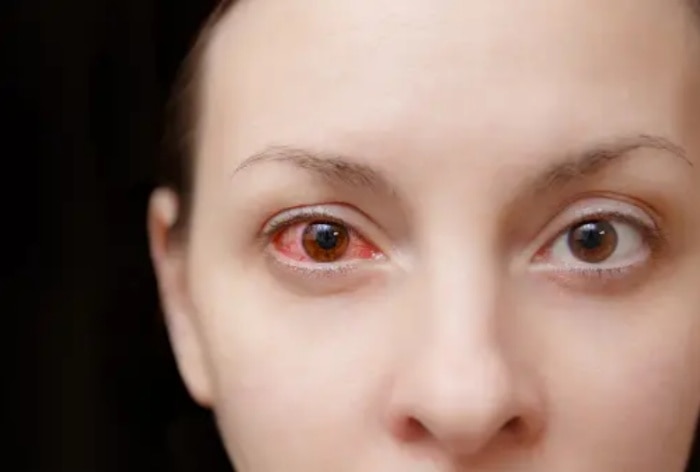Conjunctivitis Cases on Rise: While there are many different varieties of conjunctivitis and it can be caused by bacteria, viruses, or allergies, the illness that is now prevalent is mostly an acute viral infection that progresses on its own schedule.
Conjunctivitis Cases on Rise: A common eye ailment characterized by inflammation or infection of the conjunctiva—the clear membrane surrounding your eyelid and a portion of your eyeball—pink eye, is also known as conjunctivitis. This condition may result from several causes, including germs, viruses, allergies, or poisonous chemicals. Eye discomfort and redness, the sensation that something is trapped in your eye, impaired vision, and light sensitivity may be brought on by this infection. Seek quick attention if you develop these symptoms.
5 TYPES OF CONJUNCTIVITIS YOU SHOULD BE AWARE OF:
- Allergic Conjunctivitis: This particular kind of conjunctivitis results from an allergic response to environmental allergens including pollen, pet dander, dust, or mould. In addition to swollen eyelids and excessive weeping, symptoms include itching and redness in the eyes. Eye drops or nasal sprays are frequently used as a kind of treatment to lessen irritation and swelling.
- Bacterial Conjunctivitis: It is brought on by germs like Haemophilus influenza, Streptococcus pneumonia, or Staphylococcus aureus. Redness, itchiness, and discharge from the eyes—which may be yellowish or greenish in hue—are some symptoms. Antibiotic eye drops or ointments are frequently used as a treatment to get rid of the infection.
- Viral Conjunctivitis: Viruses including adenovirus, herpes simplex virus (HSV), or varicella-zoster virus (VZV) are responsible for this form of conjunctivitis. The signs and symptoms include fever, pains, and other flu-like manifestations such as redness, irritation, and watery eyes. Antiviral eye drops or ointments are frequently used in conjunction with over-the-counter cold remedies to treat symptoms.
- Chemical Conjunctivitis: Exposure to chemicals like chlorine or detergents is the reason. Along with excessive tears, symptoms include redness and stinging in the eyes. Lubricating eye drops or ointments are frequently used as a kind of treatment to lessen irritation.
- Giant Papillary Conjunctivitis: An allergic reaction to contact lenses or any foreign substance in the eye, such as dirt or dust particles, is what causes this. In addition to increased sensitivity to light and poor vision when wearing contact lenses, symptoms include itchiness and redness in the eyes. Artificial tears to calm the eyes and, if necessary, antibiotics are usually part of the treatment.
It’s important to note that there are different types of conjunctivitis, including viral, bacterial, and allergic conjunctivitis, and each may have slightly different symptoms and causes. If you suspect you have conjunctivitis, it’s best to seek medical advice for proper diagnosis and treatment.
How Conjunctivitis Spreads During Monsoon?
The first thing you should do if you have conjunctivitis is put on a pair of dark glasses and keep your distance from other people. In addition, avoid using towels, handkerchiefs, and contact lenses. Avoid going swimming and spending too much time in the sun. Avoid congested areas.
What Are The Most Common Symptoms of Conjunctivitis?
- Red or Pink Eyes: One of the hallmark symptoms of conjunctivitis is the red or pink discolouration of the white part of the eyes. This occurs due to the dilation of blood vessels in the conjunctiva, giving the eye a pinkish or red appearance.
- Eye Discharge: Conjunctivitis can cause a discharge from the eye, which may be watery, sticky, or thick and yellow or greenish in color. The consistency and color of the discharge can vary depending on the cause of the infection.
- Itching or Irritation: People with conjunctivitis often experience itching or irritation in the affected eye. This can lead to frequent rubbing of the eye, which may worsen the condition.
- Tearing: Conjunctivitis can cause excessive tearing or increased tear production. The eyes may feel watery, and tears may mix with the eye discharge.
- Sensitivity to Light: In some cases, conjunctivitis can lead to photophobia, which is an increased sensitivity to light. People with this symptom may find bright light uncomfortable or painful.
It’s crucial to visit your doctor for an accurate diagnosis regardless of the type of conjunctivitis you have so that the right therapy may be administered.
Published Date: July 31, 2023 3:35 PM IST
Updated Date: July 31, 2023 3:44 PM IST
–>
–>


